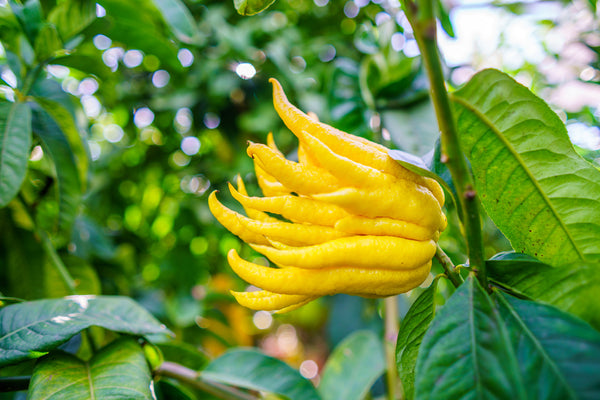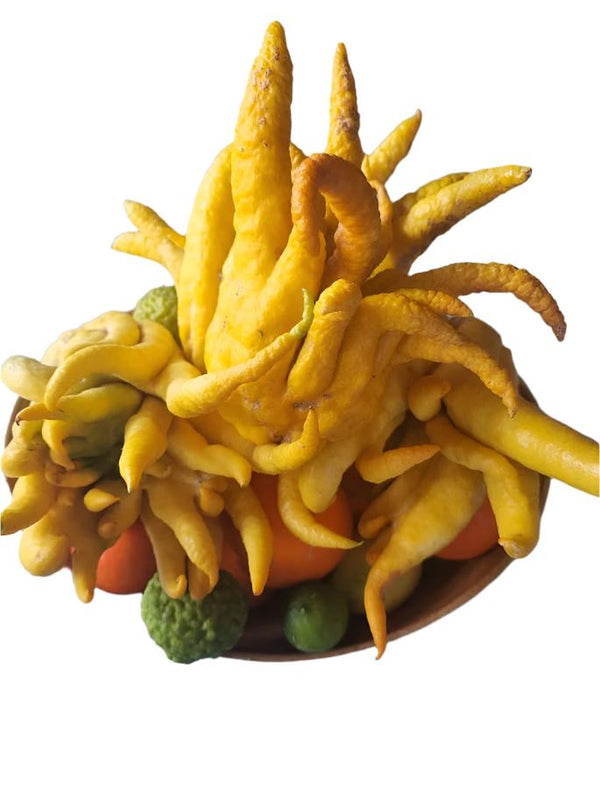
Buddha’s Hand Tree (Fingered Citron)
Tax included
Shipping calculated at checkout
Please note: OurEstablished Range, Medium Standard Range (14L pot), andTall Standard Range trees are available for pickup only, as their size exceeds standard courier limits.
Buddha's hand tree, also known as fingered citron, is a unique and unusual citrus tree which produces fruit notable for its finger-like segments and fragrant aroma. Unlike typical citrus fruits, Buddha's hand citrus trees do not have a pulpy interior. Instead, it consists of finger-like segments that emerge from a central base, resembling the shape of a hand, hence the name "Buddha's Hand." The fruit is usually yellow or yellow-orange and can vary in size.
One of the most distinctive features of Buddha's Hand fruit is its strong, aromatic fragrance. The peel emits an intense sweet fragrance, reminiscent of lemons with hints of vanilla and spices. While Buddha's hand citrus trees are primarily valued for their aromatic qualities, the fruit itself is not typically eaten raw due to its lack of pulp and juice. However, the zest of the fruit is highly prized for its intense citrus flavour, which can be used to flavour foods and beverages.
In many cultures, Buddha's hand citrus trees and fruit are considered a symbol of happiness, longevity, and prosperity. It is often used as a decorative fruit during festive occasions and is believed to bring good fortune and blessings. Each "finger" of the Buddha's hand typically represents a segment of fortune and happiness.
Buddha's hand citrus trees thrive in warm, subtropical climates with plenty of sunlight. The trees can be grown in containers or planted directly in the ground, depending on the available space and climate.
|
Names |
Buddha's hand, fingered citron, Citrus medica var. sarcodactylis, |
|
Origin |
India and China |
|
Mature Size |
1.5m x 1m |
|
Foliage |
Silvery green wrinkled leaves. White flowers |
|
Soil |
Well-draining, slightly acidic soil |
|
Position |
Prefers full sun but can grow in partial shade. |
|
Flavour |
Zest is citrusy without any bitterness. Flesh is not usually eaten due to lack of pulp or juice. |
|
Fruiting |
June- August |
|
Fruit Uses |
The zest can be grated or thinly sliced and used to flavour a variety of dishes, including desserts, salads, marinades, and beverages. It is also commonly candied or used to infuse spirits and vinegar. The fruit can be dried and preserved for its fragrance, lasting for several months. |






